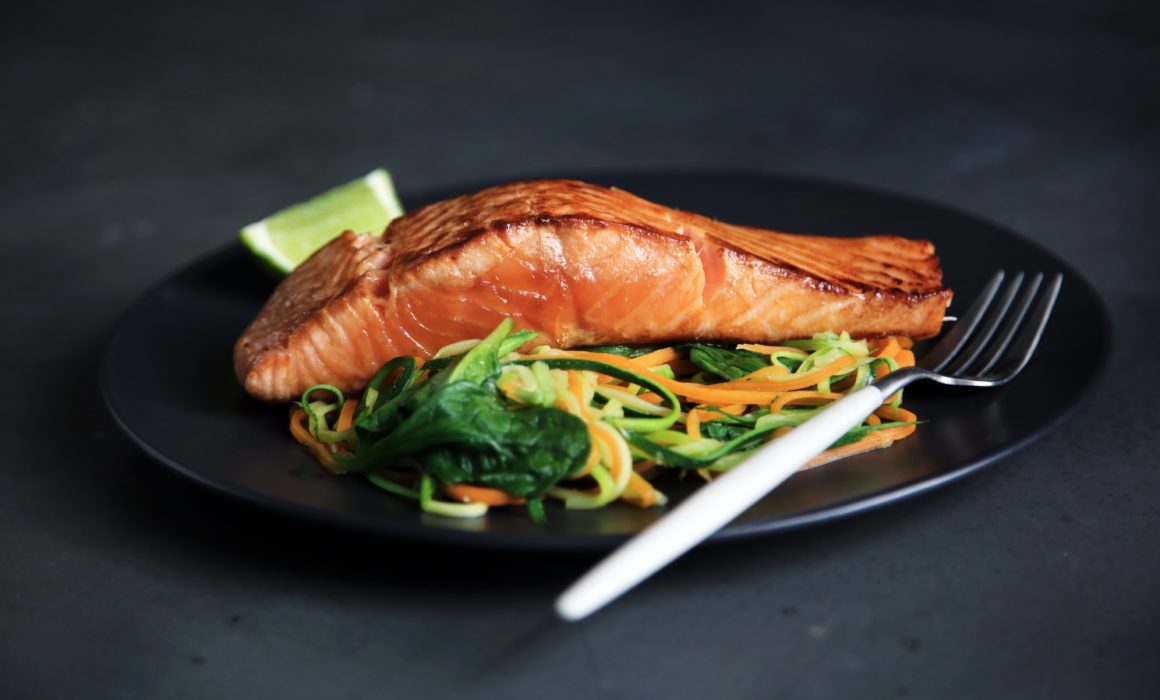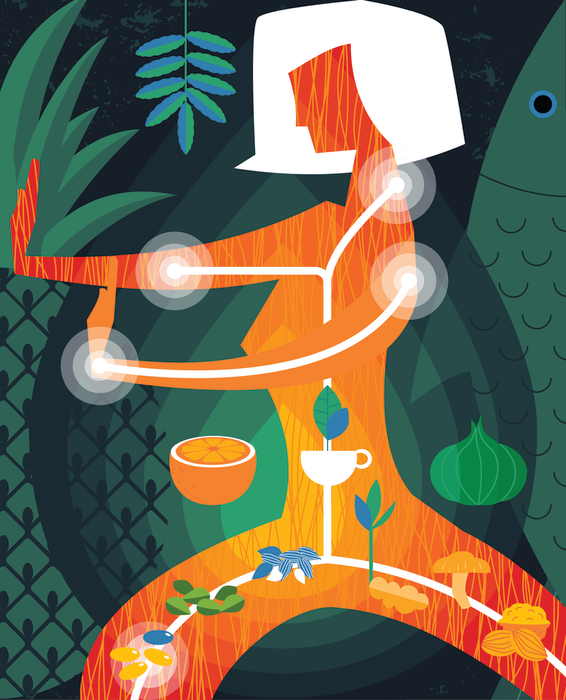It’s hard to fathom the impact of back pain on your life unless you’ve experienced it. Tania Flack investigates what can go wrong, and how you can help.
Most people have had an aching back at some stage in their life, brought on by long hours at a desk or a heavy gym session. If you’re lucky, this type of back pain will ease in a day or two and soon be forgotten. However, when that pain becomes a dull roar which refuses to let up, we start to understand how chronic back pain can impact on your day-to-day life.
Of those Australians reporting back pain, nearly half experience difficulty with mobility, daily activities and self-care, which significantly impacts quality of life. And the financial impact of back pain on the Australian economy is staggering. It’s reported to cost approximately 1.2 billion dollars per year, split between hospital care, out-of-hospital appointments and prescription medications.
And that’s only a small part of the true costs, as many people manage back pain through modalities not reported in these statistics, like osteopathy, chiropractic, physiotherapy, acupuncture, or remedial massage.
Sadly, Australia seems to be leading the world in the impact of back pain on our society. Back pain ranks as the number one issue for Global Burden of Disease estimates in Australia, compared to sixth worldwide.
How can we treat back pain and what steps can we take to prevent it and avoid becoming part of the statistics?
What goes wrong
Muscle strain and tension
This is perhaps the most common type of back pain and most people will experience it at some stage. It often involves the neck and shoulder area or the lower back.
Stress is a common cause of muscle tension. When we are under stress, our fight-or-flight response launches a complex range of chemical and physical changes throughout the body, which are designed to help us get out of danger. Muscles tense up in preparation to fight off danger or flee. While this is useful if we are in physical danger, it can be problematic if we remain in this state for hours, which is often the case in the workplace.
Unrelenting muscle tension leads to muscle pain, strain, tension headaches, and fatigue.
Remedial massage, stretching and yoga are all effective treatments; however if this is an ongoing problem then meditation, mindfulness techniques, stress management and counselling can help you control stress and minimise muscle tension.
Another common cause of muscle strain is poor posture at work, especially if you sit all day. Inadequate lumbar support, incorrect placement of your computer screen or armrests set to the wrong height can all contribute to muscle strain. You should be able to adjust your workstation to suit your requirements. If you have repeated work-related muscle strain, speak to your employer and seek advice from your practitioner or an ergonomist who specialises in preventing work related postural injury.
Treatment options: Remedial massage, yoga, acupuncture, ergonomics, stress management.
Ligament or tendon strain
This type of injury is usually a direct result of over-stressing a joint, which can occur when lifting incorrectly. It can also be due to an accident: whiplash is a common example of this. The pain can be immediately obvious in some cases or may take up to 24 hours to become apparent, depending on the type and site of the injury.
The best first aid to apply is rest, ice and to limit movement until you see your practitioner. This helps to minimise inflammation and reduce pain.
Ligaments and tendons are avascular tissue, meaning they don’t have a blood supply, so this type of tissue can take some time to heal.
Treatment options: Physiotherapy, osteopathy. First aid: Rest, ice and limit movement. Arnica cream can reduce inflammation and speed healing.
Bulging disc
We have fibrous discs between each vertebra which help to cushion the spine against impact and protect the joints. These discs consist of a fibrous outer layer and a softer inner gel-like centre.
Like bones, discs are prone to degeneration with ageing and overuse, which can lead to herniation if the joint is put under undue pressure. When the disc herniates, the soft inner layer pushes through the outer layer of the disc and the resulting bulge can compress nerves in the spine. Often called a ‘slipped disc’, this type of back injury commonly occurs in the lumbar spine and sometimes in the neck.
It requires careful management and imaging , such as a CAT scan or MRI, to assess the degree of damage and help your practitioner formulate a treatment plan. This type of injury is often the cause of chronic back pain and severe cases may require surgery to relive pressure on the nerves.
Treatment options: Osteopathy, physiotherapy or chiropractic care. Imaging such as CAT scan or MRI is important and a medical consultation may be required.
Osteoarthritis
As we age, so do our vertebrae and over the course of our lives they are subjected to general wear and tear, which can lead to localised inflammation and osteoarthritic degeneration of the joint. This causes limited mobility and, in some cases, chronic back pain.
Maintaining strong bones is essential to help prevent osteoarthritis and having a whole-food diet rich vitamins and minerals will help maintain bone strength. A calcium supplement, along with glucosamine, chondroitin, vitamin D and K2, will support bone strength.
You can reduce inflammation by consuming oily fish such as salmon, mackerel, sardines and herring three times a week, and making sure you have lots of fresh green leafy vegetables in your diet. Avoiding foods known to promote inflammation – sugar, highly refined carbohydrates, preserved meats and fried foods – is also very important.
Herbal medicine, including turmeric, devil’s claw, cat’s claw, celery seed and ginger, can help relieve inflammation.
Treatment options: Nutritional medicine, herbal medicine, weight management, exercise and physiotherapy.
Sciatica
This describes the pain caused by compression and inflammation of the sciatic nerve, which exits the spine in the lower back and runs down the leg. This is a very important nerve and is involved in coordinating muscle movements when we walk.
This nerve can be compressed by a bulging disc in the lower back or can become compressed by the piriformis muscle, deep in the gluteal region.
Once this nerve is compressed, inflammation gets trapped between the nerve and the myelin sheath and swelling travels down the length of the nerve, causing the pain and weakness in the leg and foot which is typical of sciatic pain. This needs to be professionally assessed and treated as the two common causes of sciatic pain are managed very differently.
Treatment options: Great relief can be achieved by releasing the piriformis muscle along with the other deep muscles of the hips. Remedial therapists can achieve this while Pilates and yoga can help to prevent a relapse of piriformis-induced sciatica. If sciatic pain is due to a bulging disc, an osteopath, physiotherapist or chiropractor can help. X-rays and a medical consultation may also be required.
How to reduce your risk
Watch your weight
Being overweight is perhaps one of the biggest risk factors when it comes to back pain. Carrying extra weight burdens joints unnecessarily and is a leading cause of osteoarthritis, along with ageing. Excess weight around the middle shifts our centre of gravity and puts pressure on the lower back, increasing the risk of muscle strain or spinal injury.
Being overweight at the time of a back injury significantly slows the healing process. This is particularly important in the case of a herniated disk, especially if surgery is required. Being overweight at the time of injury can lead to a vicious cycle, because back pain prevents people from exercising, which leads to more weight gain, which ultimately leads to more back pain.
Luckily, weight management can be successfully achieved through diet alone for people who have limited mobility. Consulting with a nutritionist to formulate a dietary plan can be the first step to recovery and maintaining a healthy weight protects against future back injury.
Regular exercise
Poor core muscle strength shifts much of the weightbearing strain to the spine and can lead to greater wear and tear of the joints and an increased risk of injury. Achieving and maintaining strong abdominal muscles is one of the best way you can protect your back.
Walking, swimming, and taking part in sports that use a range of different muscles all help to strengthen the core and maintain flexibility Pilates and yoga are great ways to strengthen the body, reduce muscle pain, increase flexibility and retrain postural core muscles.
Other excellent activities include the Alexander technique and the Feldenkrais method: these both help people to reconnect with their body, become more aware of their posture, and strengthen and rebalance the core muscles. They are marvellous therapies for preventing and treating back injury and reducing chronic pain.
Occupational risks
Certain occupations carry greater risk of back injury. Any job that involves sitting for long hours, such as office work or truck/taxi driving, puts a great deal of pressure on the back and spine. If you sit all day you should schedule a break every hour, get up and walk to the water cooler or pull over and take a five minute break to stretch your legs. If your job involves heavy lifting or repeated bending, put measures in place to minimise back strain. If your work is straining your back, speak to your employer; sometimes only small changes are needed to make a big difference.
We should all be more aware of back health. Staying fit and active throughout life, and maintaining strong, flexible core muscles and a healthy weight can all considerably reduce your risk of back pain. And, if you are experiencing back pain, remember early intervention is the key to a fast recovery.
Best therapies for back pain
Remedial massage, Osteopathy, Acupuncture, Chiropractic care, Physiotherapy, Pilates, Yoga, Feldenkrais method, Alexander technique, Herbal medicine
Best nutrients for back pain
Turmeric, Ginger, Garlic, Oily fish, Shellfish, Flaxseed, Berries, Cherries, Leafy green vegetables, Cold-pressed virgin olive oil
Anti-inflammatory foods for pain
- Magnesium, for muscle spasm – red meat, chicken, turkey, almonds, pecans, pistachios, sesame seeds, sunflower seeds, legumes
- Essential fatty acids, for inflammation – deep sea oily fish, such as salmon, mackerel, sardines, herring and flaxseed
- Vitamin C, for tissue strength – citrus fruit, blackberries, kiwifruit, red capsicum, strawberries, papaya, broccoli, rockmelon
- Zinc, for would healing – oysters, red meat, Brazil nuts, almonds, cashews, walnut, pine nuts, sunflower seeds, parsley
- Folate, for tissue repair – leafy green vegetables, carrot, celery, cabbage, chickpeas, hazelnuts, chicken livers, oranges
- Calcium, for bone strength – dairy products, small fish with edible bones, like sardines and anchovies, tahini, crab, duck, sunflower seeds
- Vitamin D, for bone health – dairy, egg yolk, herring, calamari; it is also synthesised from exposure to sunlight.
This article first appeared in Nature & Health magazine.
Download the article



